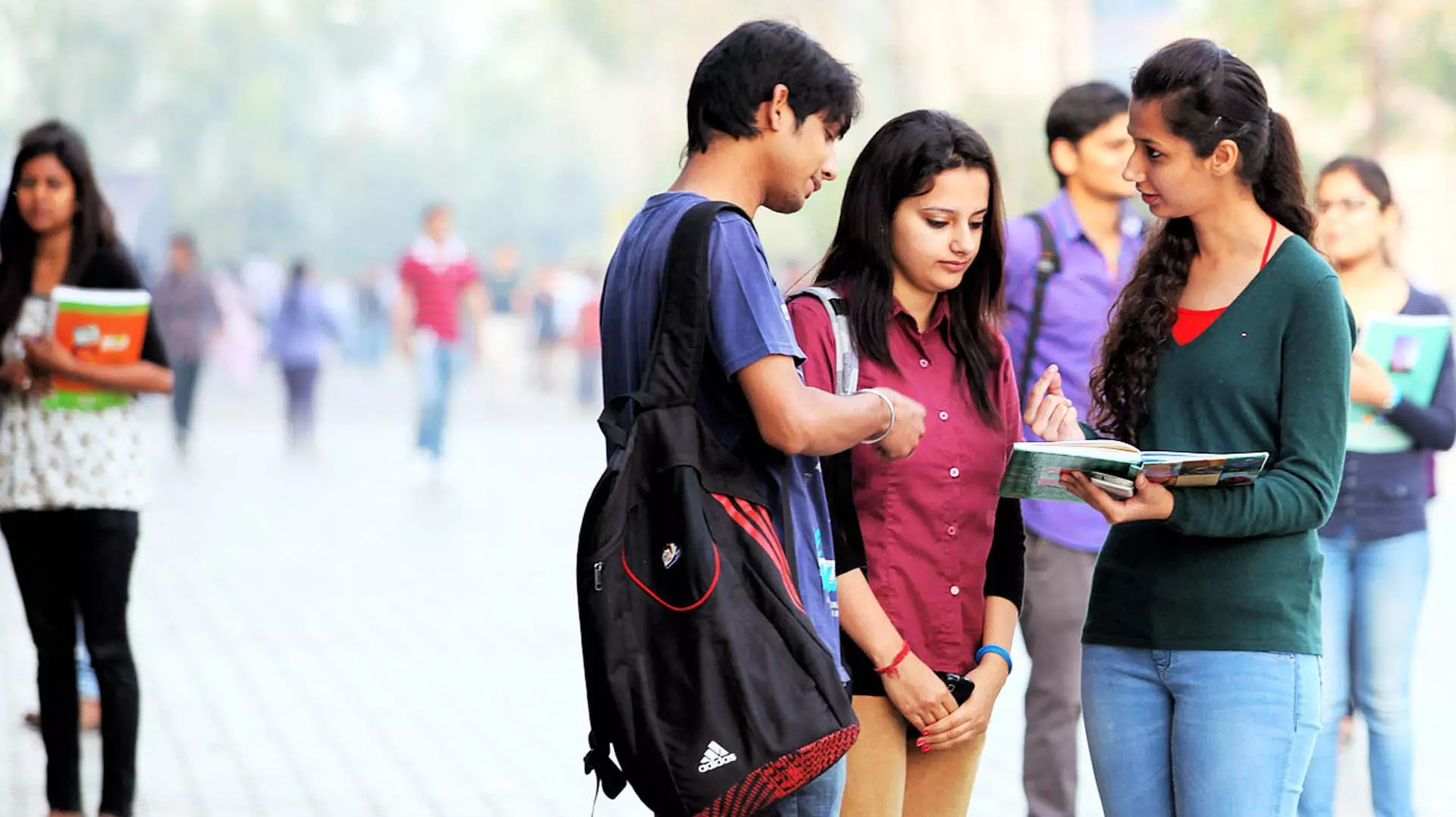ASER Report: 42.7% of Teens in India Struggle to Read English Sentences

New Delhi: A quarter of teenagers in the age band of 14 to 18 years can’t read a Class 2-level text fluently in their regional languages, and a substantial 42.7 per cent cannot even read sentences in English, reveals the latest edition of the Annual Status of Education Report (ASER) released on Wednesday.
ASER is a nationwide citizen-led household survey that provides a glimpse of the status of children’s schooling and learning outcomes in rural India. The ASER 2023 “Beyond Basics” survey was conducted in 28 districts across 26 states, reaching a total of 34,745 youth in the age group 14-18 years. One rural district was surveyed in each major state, with the exception of Uttar Pradesh and Madhya Pradesh, where two rural districts were covered.
The report painted a grim picture outlining that overall 86.8 per cent among the 14-18 year age category are enrolled in either school or college and the enrollment percentage goes down with the age. The proportion of youth who are now not enrolled in school or college rises with age from 3.9 per cent of 14-year-olds to 10.9 per cent of 16-year-youth and 32.6 per cent of 18-year-old students.
Flagging that the Covid-19 pandemic had propelled a threat to livelihoods with older children dropping out of school, the report underscored that the fear “turned out to be unfounded”. “The proportion of out-of-school children and youth has been declining, led by the government’s push to universalise secondary education,” it stated.
The report, however, pointed out that while young people remain in school longer, there’s no significant change in their foundational literacy and numeracy skills (FLN).
In 2017, 76.6 per cent of 14-18-year-old coulds read a Class 2-level text, while in 2023, this number is slightly lower at 73.6 per cent. In arithmetic, in 2017, 39.5 per cent of youth could do a simple (Class 3-4 level) division problem, while in 2023, this proportion is slightly higher at 43.3 per cent. “More than half struggle with division (3-digit by 1-digit) problems. Only 43.3 per cent of 14-18-year-olds are able to do such problems correctly. This skill is usually expected in Class 3-4,” the report found.
The survey also assessed young people’s ability to apply basic arithmetic and reading skills to everyday calculations, reading, understanding written instructions; and financial calculations that need to be done in real life.
The worrying trend has been that less than half of youngsters (about 45 per cent) could calculate the number of hours that a child slept based on the time he/she went to bed at night and woke up in the morning.
In another everyday task of measuring an object with a scale, 85 per cent of those surveyed could calculate the length of an object correctly if it was placed at the “0” mark on the ruler. But when the object was moved and placed elsewhere on the ruler, less than 40 per cent could correspond correctly. Two-thirds of youth (65.1 per cent) were able to read functional instructions on a packet of ORS solution.
Across all tasks that test youngsters’ ability to apply basic numeracy and reading skills, male candidates tend to do better than women. The survey showed that overall 86.8 per cent of youth between the age of 14 and 18 years are enrolled in an educational institution, with the gender gap in enrollment being only 0.2 per cent.
The report said: “Most of the young people in this age group were enrolled in the Arts/Humanities stream. In Class 11 or higher, more than half are enrolled in the Arts/Humanities stream (55.7 per cent). Females are less likely to be enrolled in the STEM stream (28.1 per cent) than males (36.3 per cent).”
The report said more than 55 per cent students of Classes 11-12 opt for humanities, followed by science and commerce. It also pointed out that females are less likely to be enrolled in the STEM (science, technology, engineering, mathematics) streams than males. “Only 5.6 per cent of surveyed youth report taking vocational training or other related courses currently. Youth at the college level are the most likely to be taking vocational training (16.2%). Most youth are taking short duration courses (of six months or less). A higher percentage of males (40.3 per cent) than females (28 per cent) report doing work other than household work for at least 15 days during the preceding month.”
The report pointed out that among both males and females, most youth who are working in activities other than household work tend to be working on family farms.
The ASER survey delved into domains like “What activities are India’s youth currently engaged in? Do they have basic and applied reading and maths abilities, digital awareness and skills? Do they have access to smartphones, what do they use smartphones for, and can they do simple tasks on their smartphones?”
“The surveyed youth were given five types of tasks -- basic reading, maths and English abilities; application of basic skills to everyday calculations; reading and understanding written instructions; and financial calculations that need to be done in real life. Youths’ performance on digital tasks was summarised taking into account digital awareness and aptitude," it said.

